Based just outside Lower Town in Co Tyrone, Trevor Black runs a tillage farm alongside his father, Don. Passionate about growing crops, the family also run a vibrant agricultural contracting business, and look after crops for many farmers in the area.
The family grow crops in some very hilly terrain, so hilly that you’d have to see it to believe it. As a result, the land type plays a pivotal role in machine selection, with all gear bought to suit the farm.
Despite spraying and spreading fertiliser over huge acreages for themselves and on hire, trailed spreaders and sprayers are simply not an option.
We travelled to Co Tyrone to catch up with the Black family as they were spraying T2 fungicide, to find out how their Kverneland front- and rear-mounted sprayer tank combination has performed to date, since taking delivery three years ago. 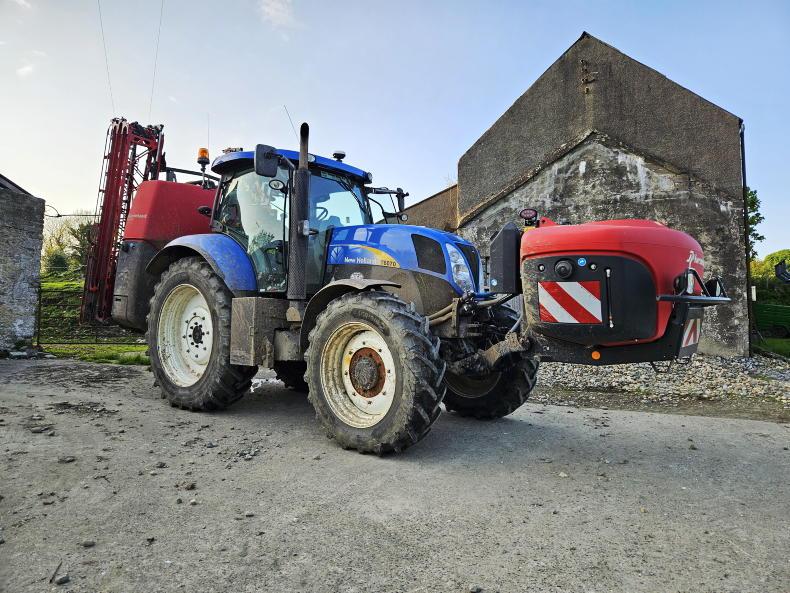
The rear tank holds 1,800 litres and the front tank holds a further 1,100 litres,
History with sprayers
“Growing up, all I remember using were Hardi sprayers. They were all mounted sprayers, which I suppose would have been 12m. Our first move away from Hardi was to Amazone in 2005, when we bought a new 21m mounted machine. That was a great sprayer. We went down the Amazone route at the time as it was a very compact machine.
“About seven or eight years ago, we decided to upgrade the sprayer once again. By then, we had begun running quite a bit of Lemken drills and cultivation equipment, and were very happy with it. We decided to try a Lemken sprayer, running a front- and rear-mounted combination. The sprayer worked well in general, but gave some niggly bits of bother.
“At the time, we were hiring one tractor on an all-year-round basis. The cost of this was creeping upwards and we decided to take a gamble on a self-propelled sprayer. It made sense, as we wanted to have a machine ready to spray whenever the opportunity arose.
“After monitoring the used market, we purchased a 2010 SAM sprayer, with a 3,000l tank, 24m booms and full section-control. It was hands down the best machine I ever sprayed with. However, it didn’t like hills, and this was a big problem for us. So much so that we only kept the machine for one year.
“We went back to the drawing board and it was inevitable that a front- and rear-mounted tank combination was the only viable option for our operation. We looked at the market, and narrowed it down to Kverneland and Amazone. We liked both machines, but opted for the Kverneland based on several specification differences, price and dealer proximity,” explained Trevor. 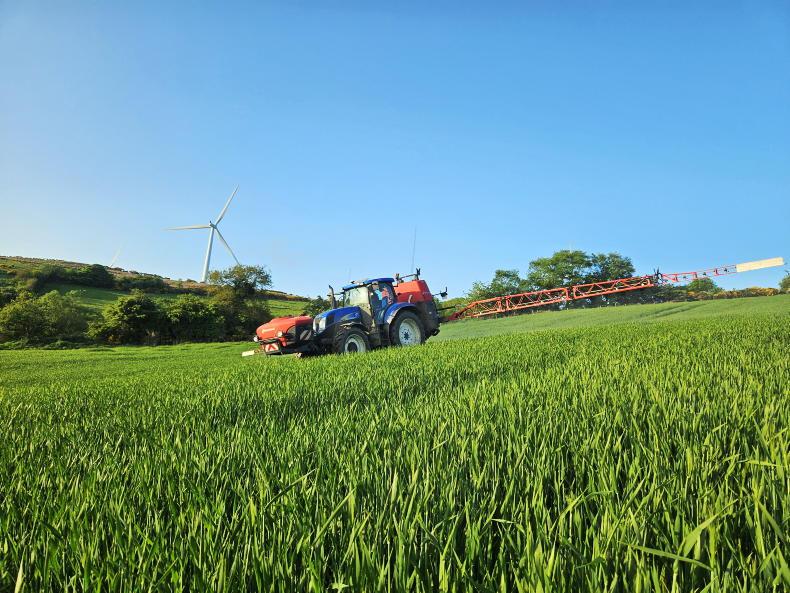
With three years’ experience spraying with the machine, Trevor is very impressed with the outfit.
Kverneland sprayer
Trevor opted for a Kverneland iXter B18 rear unit and the iXtra front tank. The rear tank holds 1,800l (2,000l max tank capacity) and the front tank holds a further 1,100l, providing a total volume of 2,900l. Different boom types are available, ranging from 15m to 30m. Trevor opted for a 24m sprayer, which is fitted with nine sections.
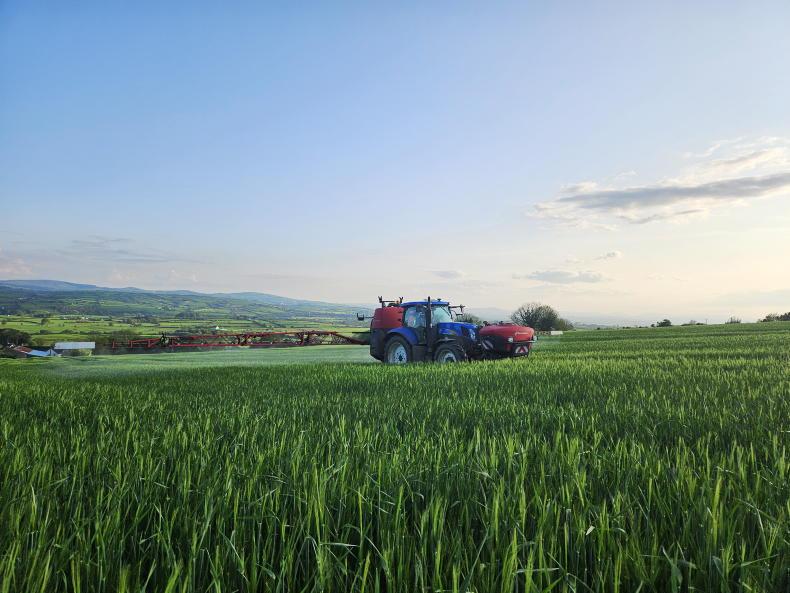
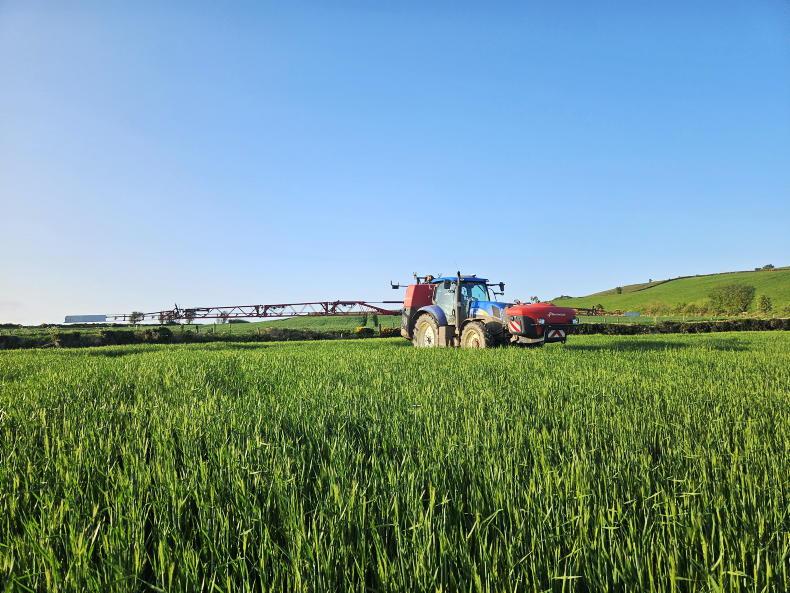
One of the main deciding factors leading Trevor towards purchasing the Kverneland was the multi-tank-management strategy with independent filling. This offers users the possibility to work with two separate spray tanks, meaning two different tank mixes, one in the front and one in the rear tank, which can be used independently.
If using just one chemical mix, both tanks are filled with water and boosts overall tank capacity. Front to rear tanks will then be emptied in equal proportion for optimum weight distribution. Either tank can also be treated with a reservoir approach. Either can be filled with water to be used as a reservoir for later use, for example in another field or crop. If needed, liquid can be transferred in both directions between tanks.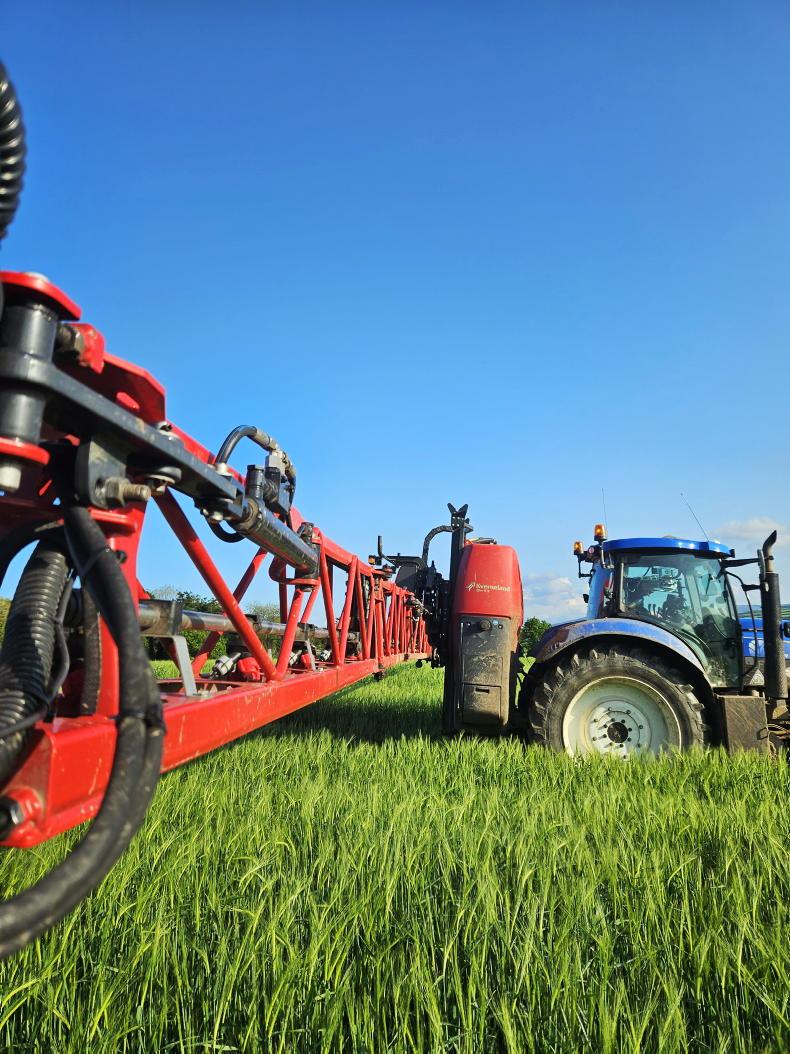
Trevor opted for a 24m HC boom which features a triangular steel construction.
Boom
Trevor opted for a 24m HC Boom. The HC features a triangular steel construction. The balancing system comes with professional steel rollers to ensure perfect suspension in all conditions and to allow high-speed spraying. The boom caters for one side folding and one side spraying, symmetrical reduction and asymmetrical reduction depending of the choice of electric hydraulic command. Trevor added some chequer plate to the outer booms, for additional protection. On the road, the sprayer neatly folds to a transport width of 2.5m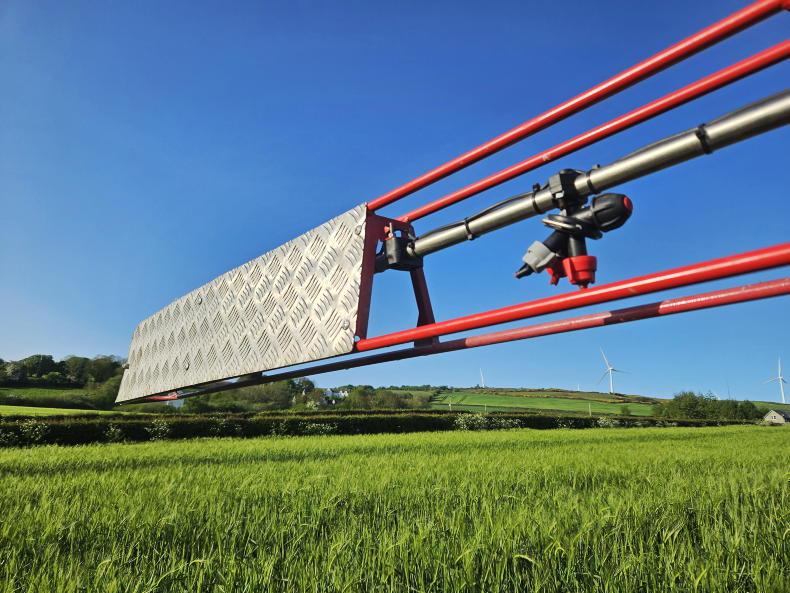
Trevor added some checker plate to the outer booms, for additional protection.
Mixing
Trevor opted for the top-end iXclean Pro which offers a fully automatic, electric valve management system for the IsoBus sprayer. This allows for all functions to be controlled from the cab, which includes switching between filling, agitation, spraying, diluting, priming, rinsing and tank cleaning. In addition to auto filling, the iXclean Pro system offers an automatic multi-step rinsing and cleaning programme for the sprayer.
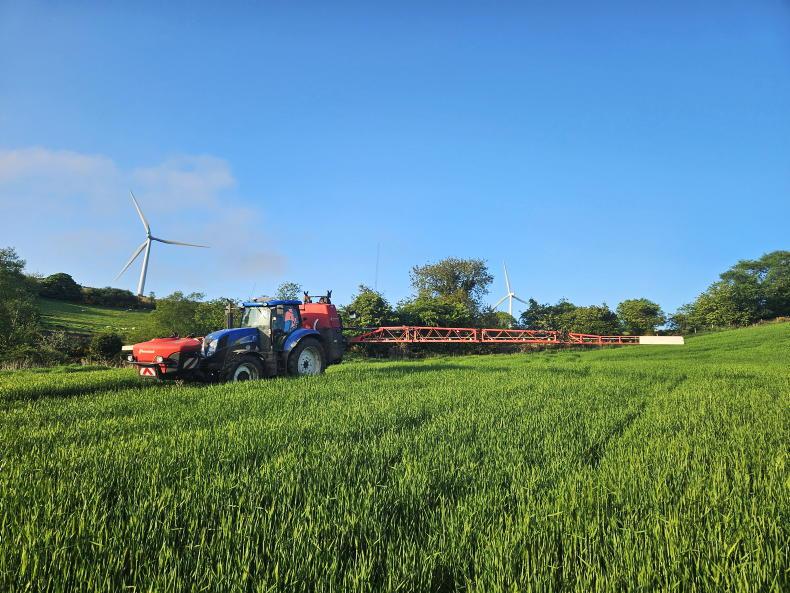
Trevor opted for a 24m sprayer, which is fitted with nine sections.
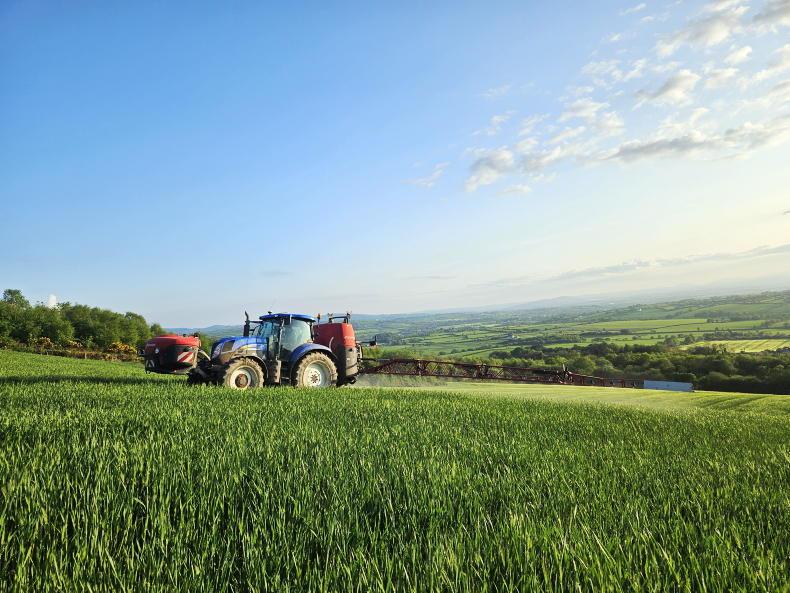
The rear unit is coupled and decoupled using the EasyHitch system, which is attached via an A-frame.
Trevor explained that he is more than happy with the system’s ability to wash out the sprayer. Kverneland claims that residue levels after automated cleaning are below 1%.
Trevor is happy with the valve panel, which sees the controls separated to a suction and a pressure side. The sprayer is equipped with a graduated induction bowl with a capacity of 30l. The suction filter tackles the complete flow before the liquid enters the pump. Kverneland says the self-cleaning pressure filter prevents blocking via a continuous flow, keeping the filter mesh clean. The undissolved particles are returned into the tank until they are completely dispersed. A 180l clean water tank comes as standard. 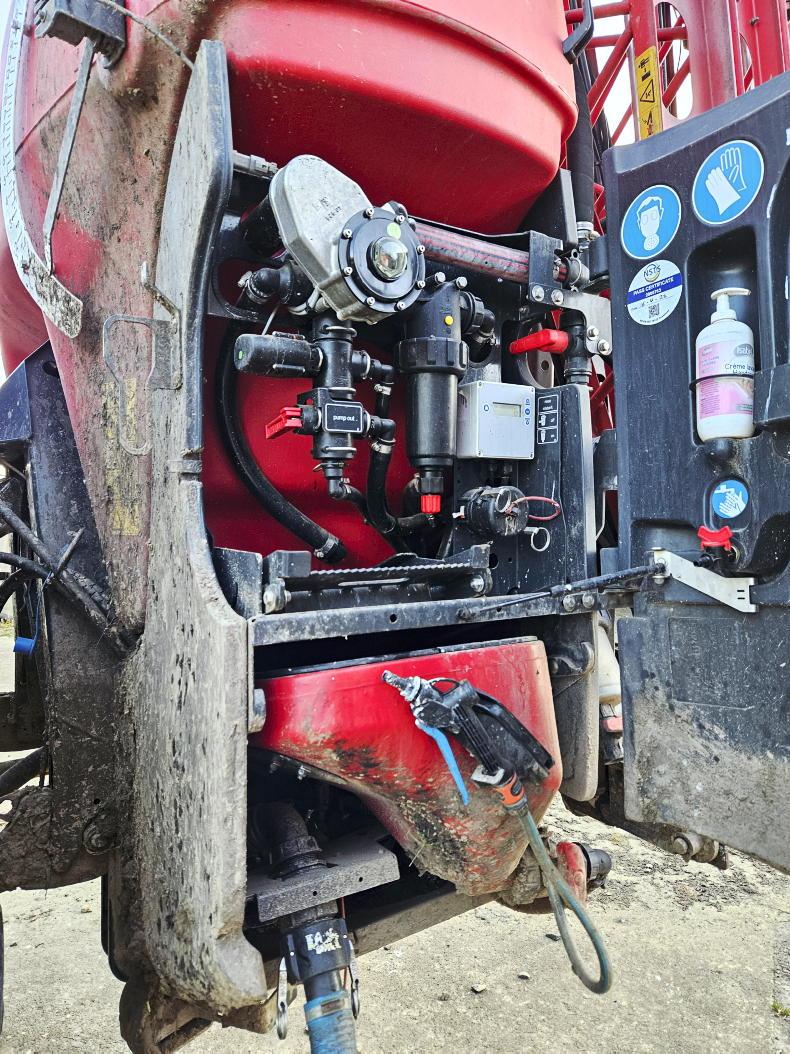
The iXclean Pro allows all functions to be controlled from the cab, which includes switching between filling, agitation, spraying, diluting, priming, rinsing and tank cleaning.
Controls
The unit comes with the option of several control terminals. Trevor opted for the highest specification, which is the 12in IsoMatch Tellus PRO terminal.
The Isobus terminal has full capability, from altering machine settings to running precision farming applications and farm management systems. It offers automatic section control and variable rate control. A dual screen functionality allows the operator to view and manage the machine and display the GPS map, simultaneously.
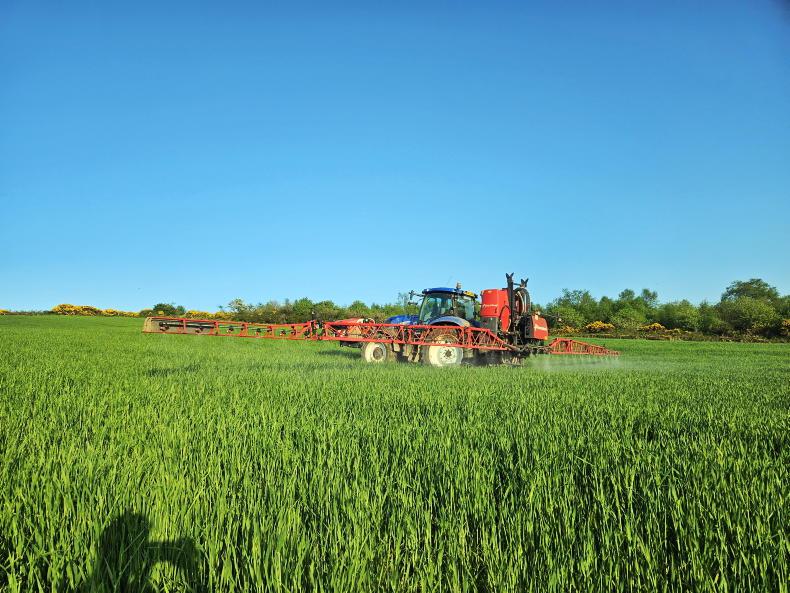

The only thing Trevor regrets is not opting for the height control sensors on the booms.
To bring this one step further, he fitted the IsoMatch Grip control joystick. This works together with the Isobus terminal, IsoMatch Tellus PRO. It allows for up to 44 implement functions to be controlled and assigned.
“I really like the control layout. We run a Kverneland Geospread fertiliser spreader, which features the exact same control terminal, and has very similar functionalities. At times, we might share the one tractor for fertiliser spreading and spraying, which means the same terminal can be plugged into to run both machines. Its very handy,” explained Trevor. 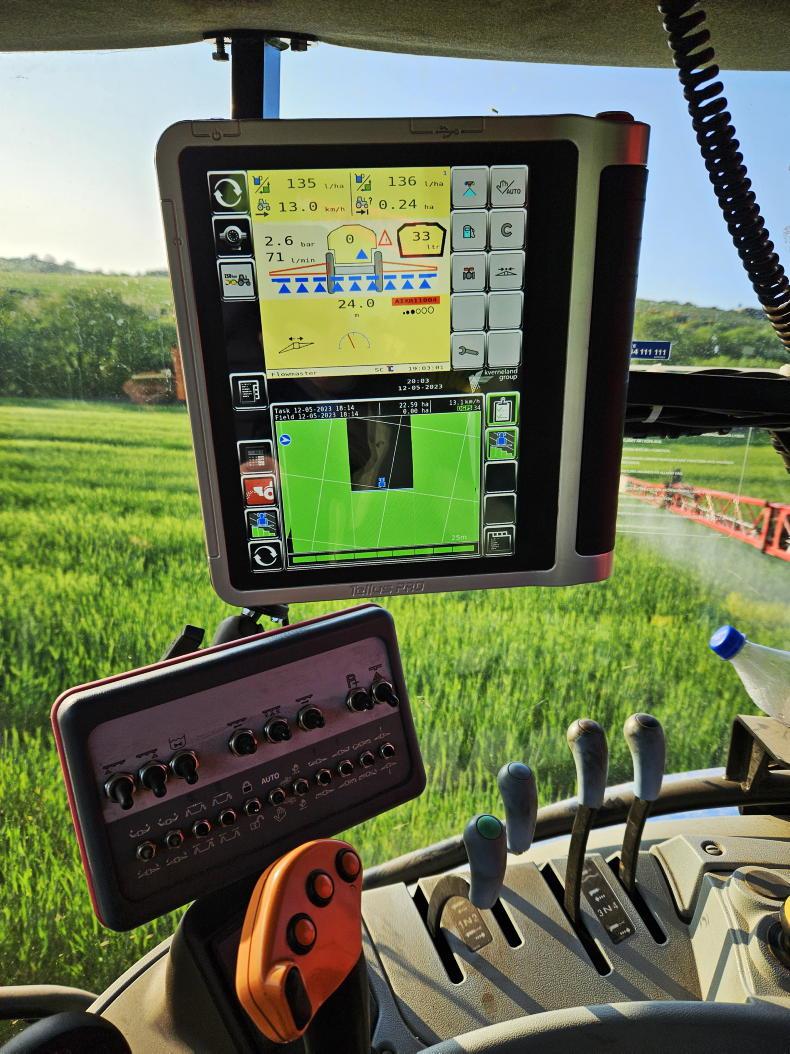
The 12in IsoMatch Tellus PRO terminal has dual screen functionality allows the operator to view and manage the machine and display the GPS map, simultaneously.
Hitching on and off
The rear unit is coupled and decoupled using the EasyHitch quick-hitch system. The unit is attached via an A-frame, while the sprayer sits on a trolley, so it is easily moved. The front tank is mounted via a similar setup. Trevor explained that one person would attach both the front and rear unit in about five minutes. He also noted that there’s a decent amount of space between the tractor and the sprayer to connect the PTO shaft, the hydraulics and the cables.
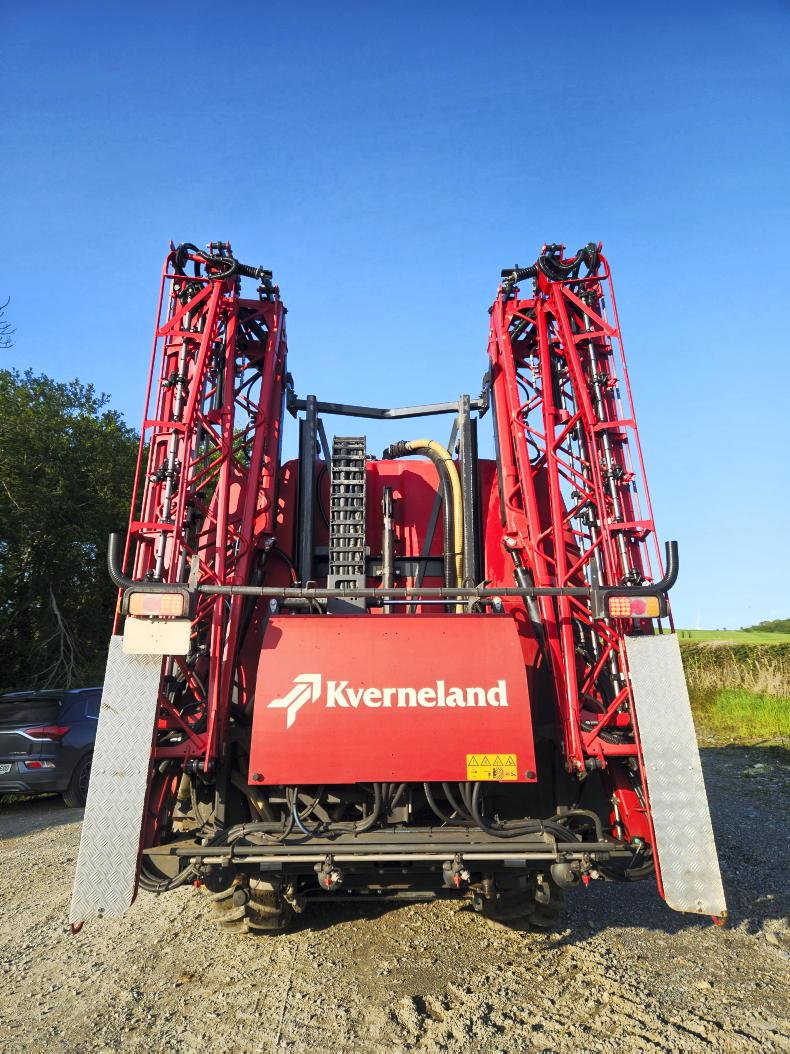
On the road, the sprayer neatly folds to a transport width of 2.5m.
With three years’ experience spraying with the machine, Trevor is very impressed with the outfit. With 3,267ha (8,073 acres) on the clock to date, Trevor explained that with the exception of some nozzle holders replaced due to driver error, not a single part has been fitted.
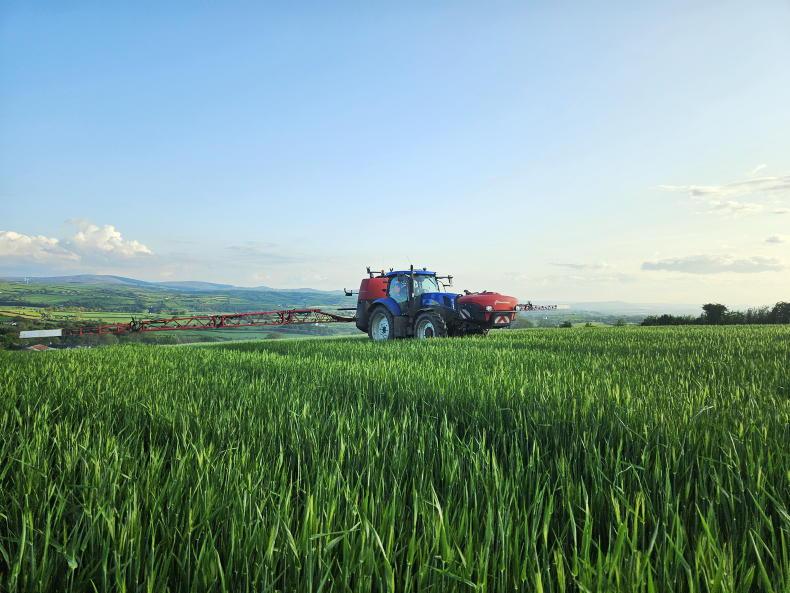

Typical output is in the region of 40 acres per hour, with higher outputs having being achieved in bigger fields. The only thing he regrets is not opting for the height control sensors on the booms. He’s more than happy having gone down the Kverneland route, with the option of bringing two different chemical mixes in the front and rear tank coming in very handy from time to time.
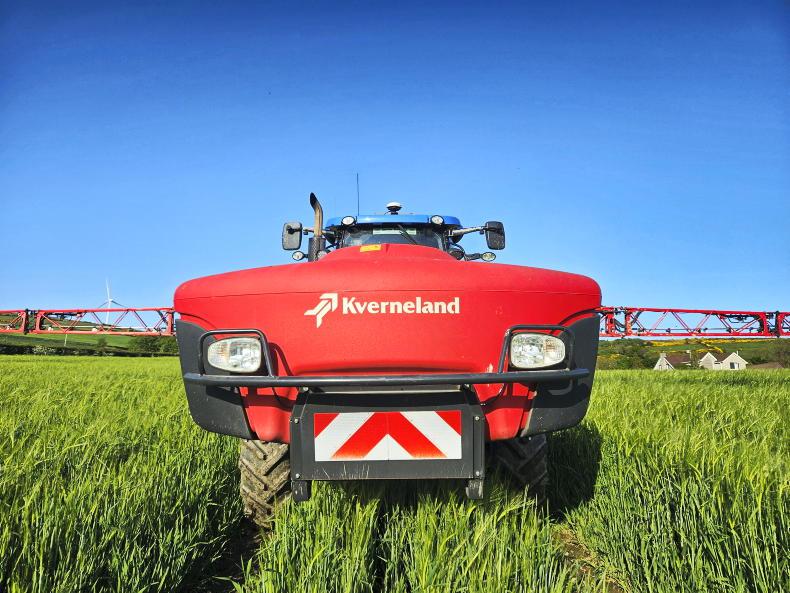
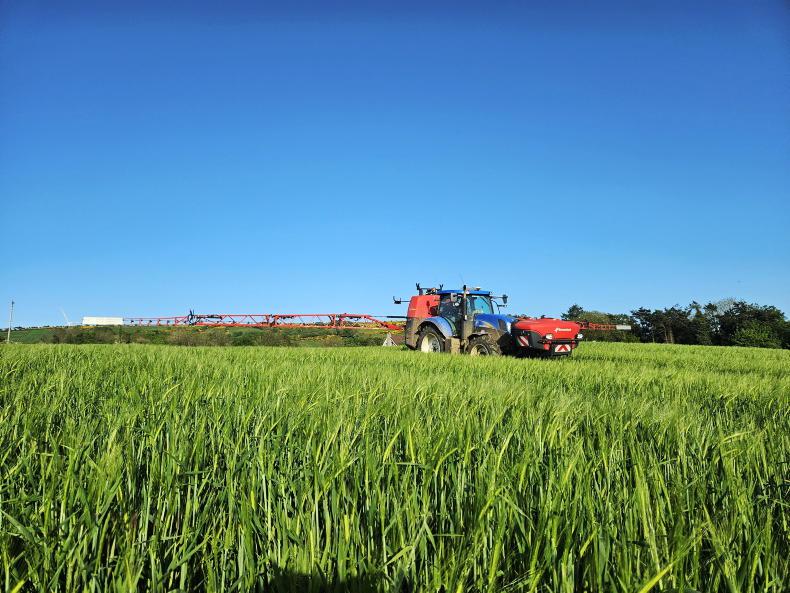
Model: Kverneland iXter B18 rear unit and the iXtra front tank.
Weight: rear tank with HC boom 1,493kg.
Weight: front tank 223kg.
Boom width: 24m steel booms.
Tank capacity:rear – 1,800 litres, front – 1,100 litres.
Clean water tank: 180 litres.
Hand wash tank: 18 litres.
Chemical induction hopper: 30 litres .
List price front tank: €12,865 plus VAT
List price rear unit: €59,050 plus VAT
Based just outside Lower Town in Co Tyrone, Trevor Black runs a tillage farm alongside his father, Don. Passionate about growing crops, the family also run a vibrant agricultural contracting business, and look after crops for many farmers in the area.
The family grow crops in some very hilly terrain, so hilly that you’d have to see it to believe it. As a result, the land type plays a pivotal role in machine selection, with all gear bought to suit the farm.
Despite spraying and spreading fertiliser over huge acreages for themselves and on hire, trailed spreaders and sprayers are simply not an option.
We travelled to Co Tyrone to catch up with the Black family as they were spraying T2 fungicide, to find out how their Kverneland front- and rear-mounted sprayer tank combination has performed to date, since taking delivery three years ago. 
The rear tank holds 1,800 litres and the front tank holds a further 1,100 litres,
History with sprayers
“Growing up, all I remember using were Hardi sprayers. They were all mounted sprayers, which I suppose would have been 12m. Our first move away from Hardi was to Amazone in 2005, when we bought a new 21m mounted machine. That was a great sprayer. We went down the Amazone route at the time as it was a very compact machine.
“About seven or eight years ago, we decided to upgrade the sprayer once again. By then, we had begun running quite a bit of Lemken drills and cultivation equipment, and were very happy with it. We decided to try a Lemken sprayer, running a front- and rear-mounted combination. The sprayer worked well in general, but gave some niggly bits of bother.
“At the time, we were hiring one tractor on an all-year-round basis. The cost of this was creeping upwards and we decided to take a gamble on a self-propelled sprayer. It made sense, as we wanted to have a machine ready to spray whenever the opportunity arose.
“After monitoring the used market, we purchased a 2010 SAM sprayer, with a 3,000l tank, 24m booms and full section-control. It was hands down the best machine I ever sprayed with. However, it didn’t like hills, and this was a big problem for us. So much so that we only kept the machine for one year.
“We went back to the drawing board and it was inevitable that a front- and rear-mounted tank combination was the only viable option for our operation. We looked at the market, and narrowed it down to Kverneland and Amazone. We liked both machines, but opted for the Kverneland based on several specification differences, price and dealer proximity,” explained Trevor. 
With three years’ experience spraying with the machine, Trevor is very impressed with the outfit.
Kverneland sprayer
Trevor opted for a Kverneland iXter B18 rear unit and the iXtra front tank. The rear tank holds 1,800l (2,000l max tank capacity) and the front tank holds a further 1,100l, providing a total volume of 2,900l. Different boom types are available, ranging from 15m to 30m. Trevor opted for a 24m sprayer, which is fitted with nine sections.


One of the main deciding factors leading Trevor towards purchasing the Kverneland was the multi-tank-management strategy with independent filling. This offers users the possibility to work with two separate spray tanks, meaning two different tank mixes, one in the front and one in the rear tank, which can be used independently.
If using just one chemical mix, both tanks are filled with water and boosts overall tank capacity. Front to rear tanks will then be emptied in equal proportion for optimum weight distribution. Either tank can also be treated with a reservoir approach. Either can be filled with water to be used as a reservoir for later use, for example in another field or crop. If needed, liquid can be transferred in both directions between tanks.
Trevor opted for a 24m HC boom which features a triangular steel construction.
Boom
Trevor opted for a 24m HC Boom. The HC features a triangular steel construction. The balancing system comes with professional steel rollers to ensure perfect suspension in all conditions and to allow high-speed spraying. The boom caters for one side folding and one side spraying, symmetrical reduction and asymmetrical reduction depending of the choice of electric hydraulic command. Trevor added some chequer plate to the outer booms, for additional protection. On the road, the sprayer neatly folds to a transport width of 2.5m
Trevor added some checker plate to the outer booms, for additional protection.
Mixing
Trevor opted for the top-end iXclean Pro which offers a fully automatic, electric valve management system for the IsoBus sprayer. This allows for all functions to be controlled from the cab, which includes switching between filling, agitation, spraying, diluting, priming, rinsing and tank cleaning. In addition to auto filling, the iXclean Pro system offers an automatic multi-step rinsing and cleaning programme for the sprayer.

Trevor opted for a 24m sprayer, which is fitted with nine sections.

The rear unit is coupled and decoupled using the EasyHitch system, which is attached via an A-frame.
Trevor explained that he is more than happy with the system’s ability to wash out the sprayer. Kverneland claims that residue levels after automated cleaning are below 1%.
Trevor is happy with the valve panel, which sees the controls separated to a suction and a pressure side. The sprayer is equipped with a graduated induction bowl with a capacity of 30l. The suction filter tackles the complete flow before the liquid enters the pump. Kverneland says the self-cleaning pressure filter prevents blocking via a continuous flow, keeping the filter mesh clean. The undissolved particles are returned into the tank until they are completely dispersed. A 180l clean water tank comes as standard. 
The iXclean Pro allows all functions to be controlled from the cab, which includes switching between filling, agitation, spraying, diluting, priming, rinsing and tank cleaning.
Controls
The unit comes with the option of several control terminals. Trevor opted for the highest specification, which is the 12in IsoMatch Tellus PRO terminal.
The Isobus terminal has full capability, from altering machine settings to running precision farming applications and farm management systems. It offers automatic section control and variable rate control. A dual screen functionality allows the operator to view and manage the machine and display the GPS map, simultaneously.


The only thing Trevor regrets is not opting for the height control sensors on the booms.
To bring this one step further, he fitted the IsoMatch Grip control joystick. This works together with the Isobus terminal, IsoMatch Tellus PRO. It allows for up to 44 implement functions to be controlled and assigned.
“I really like the control layout. We run a Kverneland Geospread fertiliser spreader, which features the exact same control terminal, and has very similar functionalities. At times, we might share the one tractor for fertiliser spreading and spraying, which means the same terminal can be plugged into to run both machines. Its very handy,” explained Trevor. 
The 12in IsoMatch Tellus PRO terminal has dual screen functionality allows the operator to view and manage the machine and display the GPS map, simultaneously.
Hitching on and off
The rear unit is coupled and decoupled using the EasyHitch quick-hitch system. The unit is attached via an A-frame, while the sprayer sits on a trolley, so it is easily moved. The front tank is mounted via a similar setup. Trevor explained that one person would attach both the front and rear unit in about five minutes. He also noted that there’s a decent amount of space between the tractor and the sprayer to connect the PTO shaft, the hydraulics and the cables.

On the road, the sprayer neatly folds to a transport width of 2.5m.
With three years’ experience spraying with the machine, Trevor is very impressed with the outfit. With 3,267ha (8,073 acres) on the clock to date, Trevor explained that with the exception of some nozzle holders replaced due to driver error, not a single part has been fitted.


Typical output is in the region of 40 acres per hour, with higher outputs having being achieved in bigger fields. The only thing he regrets is not opting for the height control sensors on the booms. He’s more than happy having gone down the Kverneland route, with the option of bringing two different chemical mixes in the front and rear tank coming in very handy from time to time.


Model: Kverneland iXter B18 rear unit and the iXtra front tank.
Weight: rear tank with HC boom 1,493kg.
Weight: front tank 223kg.
Boom width: 24m steel booms.
Tank capacity:rear – 1,800 litres, front – 1,100 litres.
Clean water tank: 180 litres.
Hand wash tank: 18 litres.
Chemical induction hopper: 30 litres .
List price front tank: €12,865 plus VAT
List price rear unit: €59,050 plus VAT




















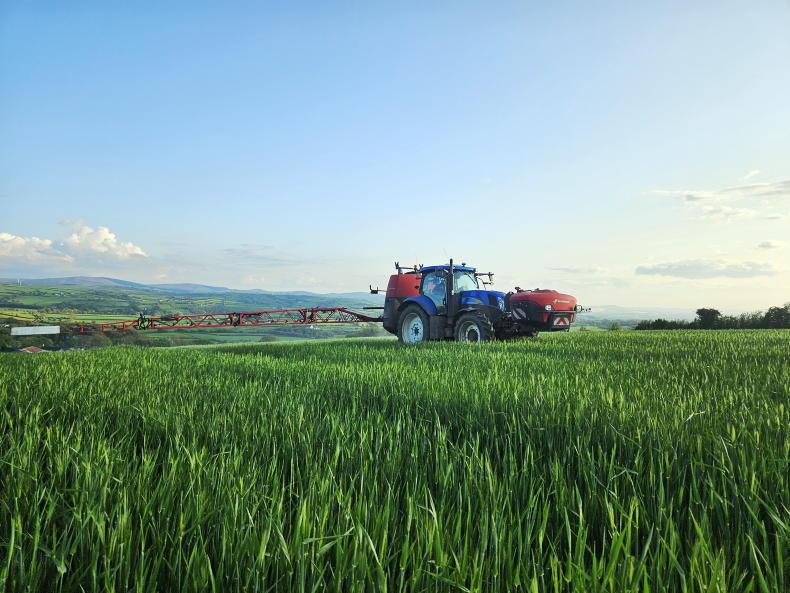


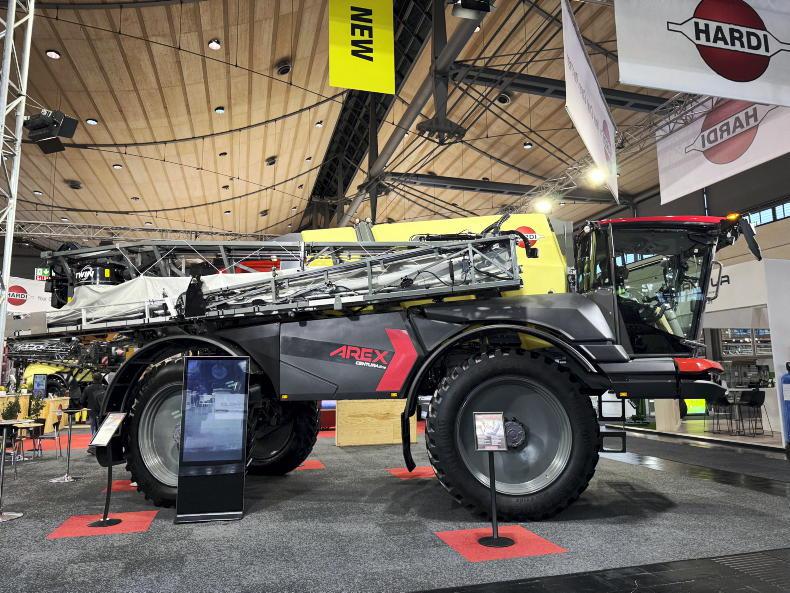
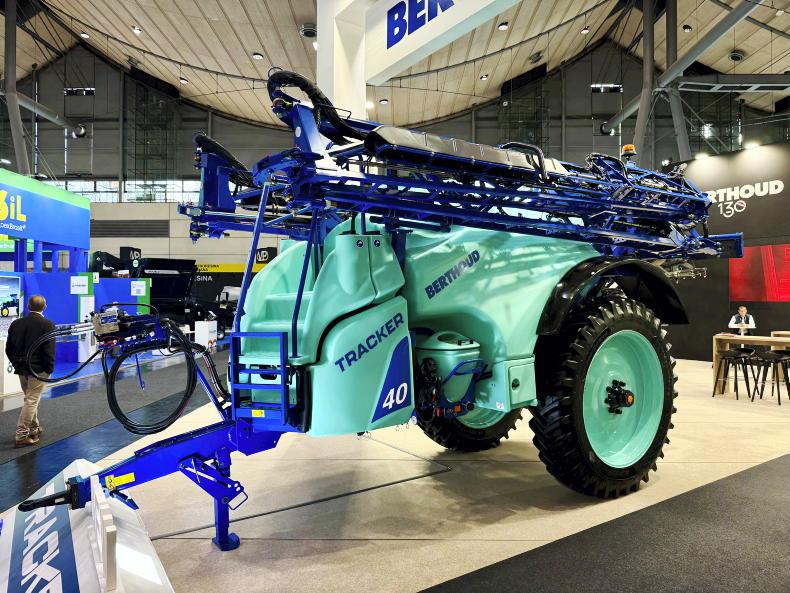

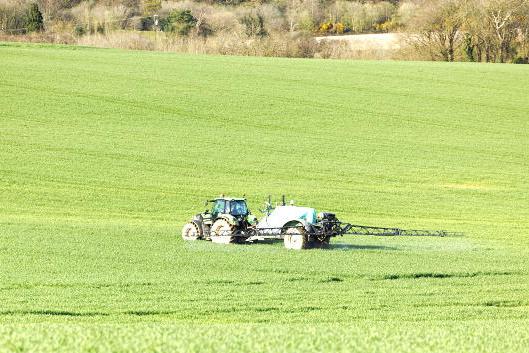
SHARING OPTIONS